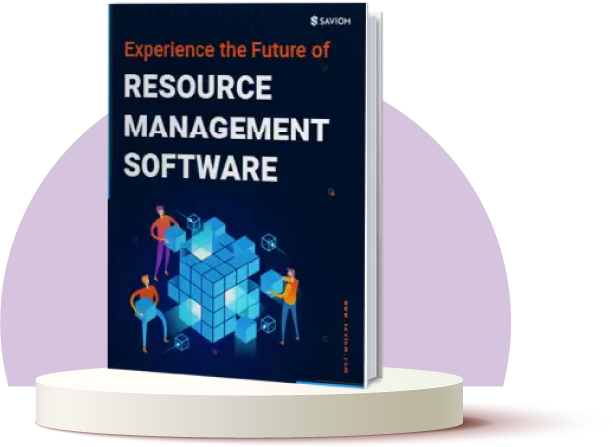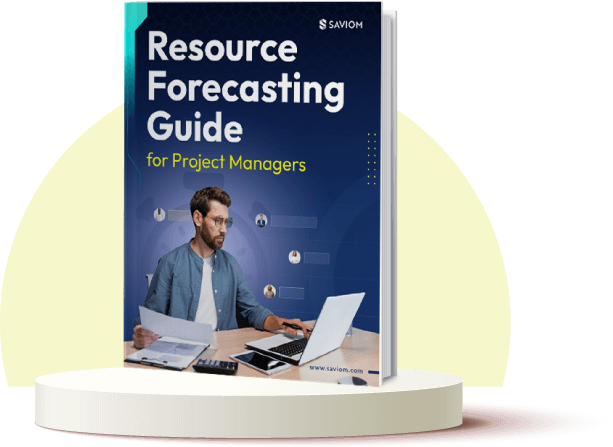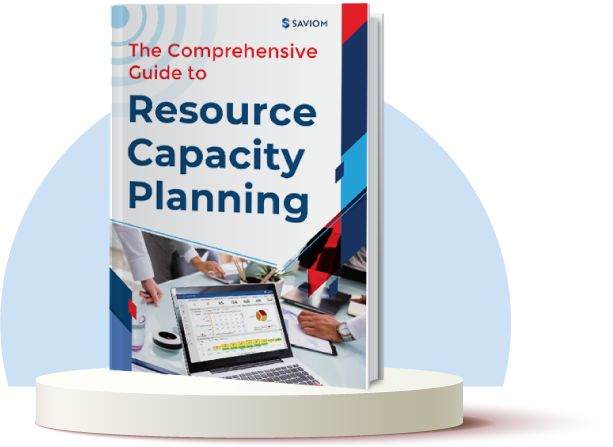Do you struggle with talent shortages midway through project execution?
Is employee engagement low, and turnover rates consistently high in your firm?
Are your hiring costs frequently spiraling out of control?
If these challenges resonate with your organization, it’s due to the absence of a well-structured human resource planning process. Without proper HRP, companies often struggle to optimize their talent pool, control labor costs, and meet project demands. Furthermore, it impacts a firm’s ability to capture market opportunities and slows down its growth trajectory.
On the other hand, good HRP practices enable organizations to ensure they have the right human capital to meet their operational and strategic objectives. It allows them to anticipate project demands, assess current capabilities, and allocate the right people to the right roles at the right time and cost. Thus, human resource planning plays a vital role in building a robust talent pipeline and boosting business efficiency.
In this blog, we’ll dive deep into human resource planning, covering its definition, types, challenges, processes, and key strategies to implement it.
Let’s get started!
What is Human Resource Planning (HRP)?
Human resource planning, or HRP, is a strategic process that enables firms to build a steady talent pipeline to achieve short and long-term organizational objectives. It involves forecasting project demand, analyzing current workforce capabilities, and developing strategies to ensure the right talent is available at the right time and cost. This approach helps organizations cultivate a strong talent pool capable of capturing emerging market opportunities and driving business success.
Now that we have clarified the definition let us move to the types of HRP.
Types of Human Resource Planning
It is essential to understand various types of human resource planning to align HR strategies with long- and short-term business goals. So here are a few:
Strategic Human Resource Planning
Strategic HRP, typically spanning three years or more, focuses on aligning human resource requirements to the organization’s long-term objectives. This involves understanding current capabilities, forecasting future workforce needs, and implementing strategies like talent acquisition, succession planning, etc., to maintain optimal capacity and mitigate resource risks.
Operational Human Resource Planning
Operational human resource planning helps firms achieve their immediate or short-term goals by ensuring the smooth operation of day-to-day activities. Typically spanning six to twelve months, this process encompasses activities such as recruitment, onboarding, employee training, payroll management, etc., supporting the broader strategic human resource plan.
Read More: What is Operational Workforce Planning and How it Benefit the Organizations?
Tactical Human Resource Planning
Tactical HRP bridges the gap between strategic and operational planning by aligning workforce needs with short- to medium-term business objectives. Typically covering a one- to three-year timeframe, it focuses on workforce optimization and skills development to meet upcoming business demands. It helps organizations stay agile & adapt to evolving market conditions while supporting long-term goals
Now, let us understand the two approaches to human resource planning.
Hard vs. Soft Human Resource Planning: How Do They Differ?
There are two distinct approaches to human resource planning: hard and soft HRP. While both these are important for workforce management, they differ in their objectives, focus, and execution. Let us see them in detail –
| Traits | Hard HRP | Soft HRP |
|---|---|---|
| Focus | Primarily, it focuses on quantitative human resource planning, such as headcount, skills, and cost. | Emphasizes qualitative aspects like employee well-being, engagement, and motivation. |
| Approach | Data-driven and analytical: relies on forecasts, budgets, and organizational needs. | People-centric: emphasizes leadership, culture, and employee welfare. |
| Decision-making | Centralized and top-down, driven by organizational goals and financial constraints. | Decentralized and participative, involving employees in decision-making. |
| Objective | Ensures the organization has the right number of employees with the right skills at the right time. | Focuses on developing & nurturing employees to enhance long-term business growth. |
| Key Activities | Workforce forecasting, budgeting, talent acquisition planning, and productivity optimization. | Learning & development programs, succession planning, and employee retention strategies. |
| Time Horizon | Short-term, often dealing with immediate, operational workforce requirements. | Long-term, often concentrating on workforce development and culture along with career progression. |
| Example | A company automating process to cut labor costs | A company investing in leadership training and mentorship programs as part of upskilling. Having understood the difference, let us shift to the importance of human resource planning. |
Read More: What is Resource Planning, and Why is it Important in Project Management?
Importance of Human Resource Planning
Given below are a few benefits of human resource planning in an organization –
Aligns HR Strategy with Organizational Goals
By analyzing and forecasting workforce needs, HRP empowers organizations to craft workforce strategies that directly support long-term business objectives. This alignment enables firms to implement targeted training & development programs that help attract and retain top talent for prolonged success.
Reduces Unnecessary Hiring Costs
Human resource planning allows firms to anticipate upcoming project demands and assess current capabilities to identify potential skill gaps well in advance. In case of variances, firms can take proactive steps, such as implementing training/upskilling or cross-training programs, to strengthen their internal talent pool and reduce unnecessary hiring costs.
Read More: 5 Ways to Reduce Project Management Costs
Streamlines Recruitment Processes
A well-defined human resource plan ensures that hiring is strategic and planned rather than impulsive or reactive. By defining precise job roles, identifying required competencies, and setting precise selection criteria, organizations can recruit top-tier talent.
Optimizes Team Productivity and Efficiency
Human resource planning helps firms match the right people to the right opportunities at the right time and cost, facilitating competent allocation. Consequently, this prevents under or over-utilization of employees, improving team productivity and overall operational efficiency.
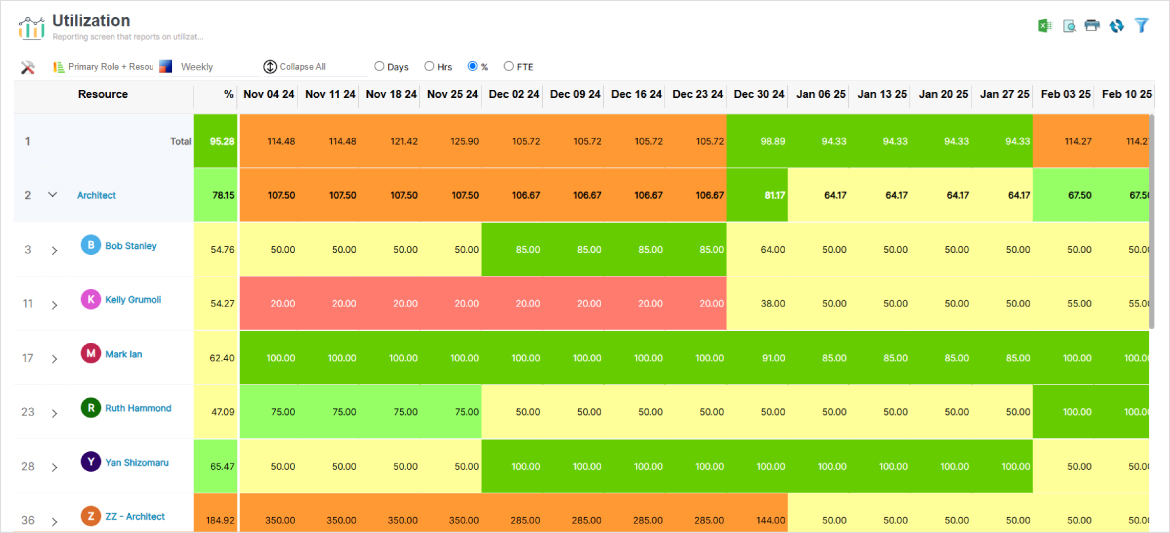
SAVIOM’s real-time color-coded report helps managers monitor and adjust workloads to facilitate productive resource utilization.
Improves Succession Planning
HRP empowers managers to assess the workforce’s skills, strengths, and gaps, enabling them to identify and prepare high-potential employees for future leadership roles. This proactive strategy minimizes disruptions from unexpected departures, ensures smooth transitions, and supports long-term business continuity.
Helps Anticipate and Mitigate Resource Risks
Effective HRP helps managers proactively assess future project demands and place resource requests on time. This gives them enough lead time to identify and mitigate potential resource risks like skill shortages, talent gaps, etc., ensuring the right personnel are available for successful project completion.
Read More: What Are Resource Risks in Project Management & How to Mitigate Them?
Increases Employee Engagement and Retention
HRP enables firms to ensure that employees are placed in roles that align with their skills, interests, and competencies, allowing them to take on tasks that match their strengths and career aspirations. As a result, people are more likely to feel valued and engaged, leading to increased productivity, higher job satisfaction, and improved employee retention.
In the next section, we will see the step-by-step process of human resource planning.
Human Resource Planning Process
Here’s how firms can implement human resource planning effectively –
Define HR Objectives and Business Goals
In this initial step, managers must collaborate with senior leadership to align HRP with the organization’s strategic goals. This involves outlining future business initiatives, such as the talent needed for growth, the organization’s readiness for expansion, etc, to ensure long-term success.
Assess the Current Workforce Levels
The next step involves evaluating present workforce attributes such as skills, competencies, experience, capacity, etc. This evaluation allows the current workforce to identify strengths, gaps, and areas for improvement, guiding future staffing or training initiatives.
Predict Future Workforce Needs
The third step involves assessing pipeline projects to understand their scope, objectives, deliverables, and timelines. With this insight, organizations can forecast the required personnel in terms of type, quality, quantity, and duration. Thus, managers can take proactive measures to ensure their timely availability.
Read More: What is Resource Forecasting? A Guide for Project Managers
Analyse Capacity vs. Demand Gap
Next, managers must evaluate whether the current capacity aligns with estimated demand. By performing capacity vs demand gap analysis, firms can identify potential resource shortages or surpluses and take proactive measures to address these imbalances effectively.
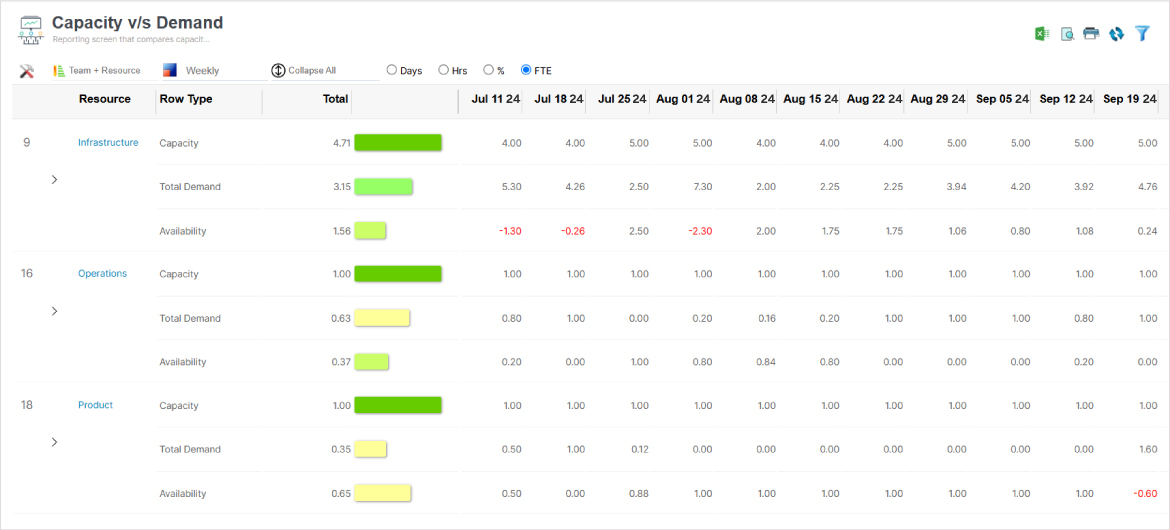
SAVIOM’s capacity vs. demand reports allow managers to assess and identify potential shortages/excesses of talent.
Develop Talent Acquisition & Development Strategies
To effectively bridge talent gaps, managers can implement targeted resourcing strategies, such as training/upskilling, cross-training, job shadowing, or out-rotation/backfill. Alternatively, if there is sufficient time, firms can engage in planned hiring to meet specific needs.
Read More: Talent Acquisition vs. Talent Management: 7 Crucial Differences to Know
Review and Adjust the Plan
After implementing the plan, it is critical to monitor its outcomes, compare them with predefined HR objectives, and assess whether adjustments are needed. By establishing KPIs like employee productivity, turnover rates, etc., managers can find inefficiencies and proactively address them to stay aligned with business goals.
Now, let us explore a few key challenges of human resource planning.
Challenges of Human Resource Planning
While effective human resource planning is essential to maintaining a qualified talent pool, it comes with several challenges. Here are some common ones –
Uncertain Market Conditions
Organizations face fluctuating resource demands throughout the year due to factors like market dynamics, seasonality, changing customer preferences, etc. Without accurate forecasting, firms struggle to anticipate these needs, leading to talent shortages or excesses, rushed hiring decisions, increased resourcing costs, and project delays.
Lack of Visibility into Workforce Needs
Without clear insight into the skills, experience, and number of employees needed at different times, managers may struggle to align recruitment, training, and development efforts with business goals. This lack of foresight can lead to last-minute scrambling for competent talent, increased hiring costs, reduced productivity, etc.
Talent Shortages & Skill Gaps
Rapid technological advancements, evolving industry demands, and an aging workforce contribute to a growing mismatch between available skills and job requirements. Additionally, lack of visibility into pipeline demands makes it difficult for managers to ensure resource availability for timely project initiations. This can impact operational output, causing client dissatisfaction and reputational damage.
Rise in Workforce Turnover Rates
When employees are consistently burdened with excessive work pressure and demanding tasks, it can result in high-stress levels and burnout. Conversely, when employees are assigned to tasks below their level of expertise, it can result in disengagement. Both scenarios can lower morale, hinder productivity, and, over time, contribute to unplanned attrition.
Read More: 12 Simple and Effective Ways to Reduce Employee Turnover in 2024
Reliance on Legacy Tools
Legacy tools often lack the flexibility, scalability, and advanced features needed to manage modern workforce complexities. Their inability to integrate with newer technologies can lead to inefficiencies, data silos, and limited insights into resource planning. This hampers accurate forecasting and slows decision-making, making it challenging for firms to respond effectively to workforce needs.
The following section elucidates the key strategies to overcome these challenges efficiently.
Key Human Resource Planning Strategies that Companies Can Implement
Companies must adopt effective human resource planning strategies to build a resilient and future-ready workforce. Given below are a few –
Stay Abreast of Evolving Market Trends
To remain competitive, organizations must stay vigilant to evolving market dynamics, such as industry trends, competitor strategies, economic shifts, etc. Failing to do so may result in skill obsolescence, delayed project delivery, missed opportunities, and strained client relationships.
Further, firms must regularly assess their internal competency matrix to identify gaps and areas for development. Subsequently, managers can implement targeted initiatives, such as job rotation or shadowing programs, to build a future-ready workforce, increase productivity, and drive overall performance.
Foresee Resource Demands Ahead of Time
Managers must proactively forecast workforce requirements for pipeline projects that have reached a certain stage of probability. This provides sufficient lead time to analyze demand vs. capacity gaps and implement necessary resourcing measures to ensure the right talent is available for project execution.
For instance, in case of resource shortage, managers can implement training or develop a hiring strategy in advance to fulfill the demand effectively. On the contrary, in case of excess, managers can either bring forward the project timelines or sell the extra expertise at discounted rates.
Read More: How Does Capacity Forecasting Help Build a Future-Ready Workforce?
Allocate the Right Resource to Projects
Firms must assign the most qualified and available employees to project tasks that align with their expertise. For that, managers must evaluate key human resource attributes such as skills, experience, availability, workload capacity, etc., and other relevant factors to identify the best-fit personnel for each task.
This strategy prevents under- or over-allocation, optimizing both employee productivity and project outcomes. As a result, firms can meet deadlines more effectively, enhance client satisfaction, foster long-term client relations, and promote business growth.
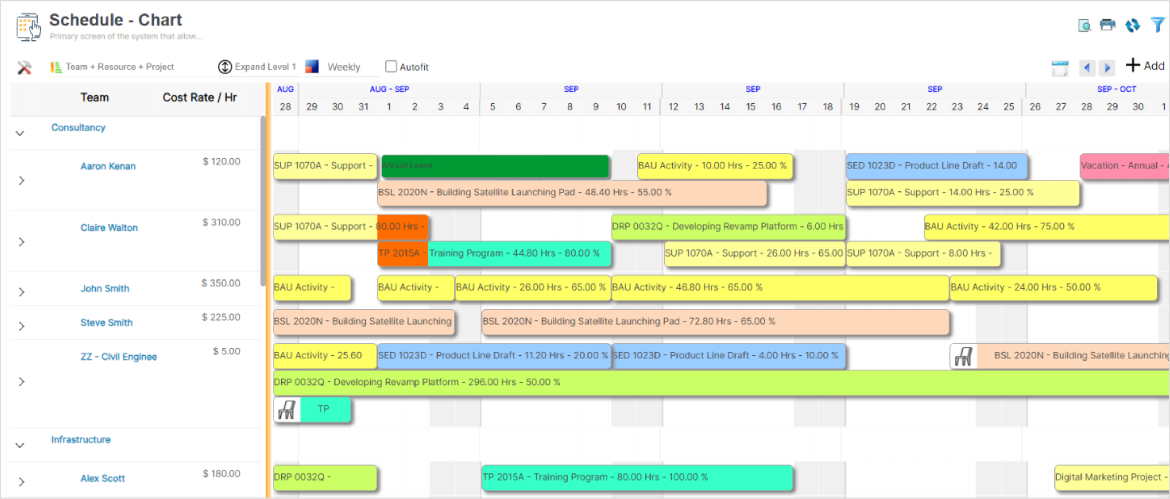
SAVIOM’s multi-dimensional scheduler allows managers to gain comprehensive visibility into resource schedules and avoid over/under allocation.
Keep a Right Mix of Permanent & Contingent Staff
Managers must have a blended workforce consisting of both permanent and contingent staff to meet immediate and long-term demands. This allows firms to leverage cost-effective contingent workers to manage unanticipated project demands, while optimizing the workload of permanent employees.
As a result, the core team is able to focus on strategic, high-value tasks that drive long-term innovation, growth, and organizational stability. Additionally, skilled contingent workers who demonstrate strong capabilities can also be transitioned into permanent roles to support future organizational needs.
Offer Learning & Development Opportunities
Investing in learning and development initiatives helps organizations enhance workforce capabilities, meet evolving business needs, and stay competitive. By offering training, upskilling programs, workshops, etc., employees can acquire new skills and refine existing ones.
Consequently, they are able to contribute more effectively to business objectives, driving innovation, efficiency, and productivity within the organization. Moreover, when employees see their growth directly tied to the company’s success, it fosters greater engagement and improves retention.
Read More: What is Skill Development? 10 Best Strategies to Build a Future-Ready Workforce
Manage Ramp-up and Ramp-down Activities
Managers must anticipate upcoming ramp-ups to identify projects with vacancies while also gaining insight into both current and future workforce schedules. This enables them to foresee when employees will be available for new assignments and strategically allocate them to open positions, thereby minimizing idle time.
By managing ramp-ups and ramp-downs effectively, organizations can minimize downtime between projects, reduce the risk of talent shortages or prolonged bench time, and maintain operational efficiency. This strategy helps optimize costs, boost employee productivity, and maintain workforce engagement.
Leverage Advanced Human Resource Planning Tool
A modern human resource planning tool offers advanced features such as forecasting, skills & competency mapping, capacity planning reports, utilization heatmaps, etc. This helps provide data-driven insights into workforce trends, talent or skill gaps, employee performance, and more.
With this valuable information, managers can tailor development programs, create defined career paths, and proactively resolve potential issues before they impact productivity. Consequently, firms can build an agile, efficient, and capable workforce, well-equipped to meet evolving business needs.
Next, let us see some future trends in HRP.
Future Trends of Human Resource Planning
HR planning is no longer just about filling positions; it’s about predicting workforce needs and optimizing talent potential. Next-gen resource planning tools help businesses forecast skill shortages, identify workforce risks, and match employees to evolving roles. By leveraging real-time data, organizations can address workforce gaps before they become bottlenecks.
Further, traditional job structures are becoming outdated as businesses shift to a skills-first approach. Instead of hiring based on degrees, companies are mapping workforce capabilities, reskilling employees, and designing internal mobility programs to meet shifting market demands. This helps reduce hiring costs and increases workforce adaptability, ensuring long-term stability.
Lastly, with remote teams and hybrid work now standard, firms are rethinking human resource planning beyond office spaces. To aid this, companies are leveraging data-driven insights to optimize work models, measure remote productivity, and maintain employee engagement. Those who adapt to these realities will reduce operational inefficiencies and build a workforce that thrives in any environment.
Read More: 8 Best Strategies to Enhance Your Remote Teams’ Productivity
The following section will explore how robust resource management software helps in human resource planning.
How Can a Powerful Resource Management Software Help?
Advanced resource management software empowers organizations to unlock the full potential of their human capital, drive strategic objectives, and transform business efficiency. Here’s how –
- The tool offers enterprise-wide visibility into key resource attributes such as skills, capacity, demand, availability, cost, etc., that enables firms to evaluate workforce capacity for current and future opportunities.
- The software’s advanced forecasting and capacity planning capabilities enable managers to identify and mitigate potential resource shortages/excesses ahead of time.
- The multi-dimensional scheduler & advanced filters enable managers to identify the best-visible-best-fit employees instead of first-available-first-fit to facilitate competent resource allocation.
- The tool has an embedded competency matrix that captures and maintains workforce skills in real time. This enables organizations to initiate training programs or succession planning accordingly.
- Real-time business intelligence reports and analytics provide data-driven insights into key performance metrics, helping firms make better business decisions.
- The modeling & simulation feature of the tool enables managers to generate multiple scenarios and assess the impact of workforce constraints from various angles to arrive at a well-suited resource plan.
Read More: How Can You Make Data-Driven Decisions with Resource Management Software?
Conclusion
Effective human resource planning is the key to building a robust and qualified talent pool in an organization. By anticipating workforce needs and aligning human resource planning strategies with business goals, firms stay competitive by ensuring maximum productivity and minimal disruptions. Further, it also helps foster employee growth and engagement, thereby driving long-term success and high ROI.
The Glossary
Read More: Glossary of Resource Workforce Planning, Scheduling and Management



